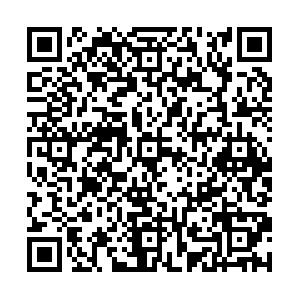Relationship between emotional behavior and literacy of primary school students
-
摘要:
目的 了解小学生情绪行为状况与识字量的关联,为提升小学生的识字量提供参考。 方法 采用随机整群抽样法,抽取新疆某地区3所小学的3 710名二、三年级学生,使用小学生识字量评价量表、长处与困难量表进行问卷调查。 结果 二、三年级学生的平均识字量(947.85±335.93,1 519.45±509.88)均低于上海市识字量常模(1 414,2 135个),差异均有统计学意义(t值分别为-62.15,-49.84,P值均 < 0.01)。小学生情绪行为各因子异常检出率依次为同伴交往问题(12.40%)、亲社会行为(12.02%)、多动(11.59%)、品行问题(10.49%)、情绪问题(5.88%)。小学生情绪症状(r=-0.19)、品行问题(r=-0.29)、多动-注意缺陷(r=-0.27)、同伴交往问题(r=-0.24)与识字量均呈负相关(P值均 < 0.01)。多重线性回归分析表明,同伴交往问题(β=-24.45)、多动-注意缺陷(β=-42.04)、品行问题(β=-50.73)对识字量有负向预测作用(R2=0.12)(P值均 < 0.01)。 结论 同伴交往问题、多动、品行问题与小学生的识字量相关。在教学过程中教师应结合学生的心理特征,采用集中识字与随文识字相结合的教学策略,注重识字能力的培养。 Abstract:Objective To understand the relationship between emotional behavior and literacy of primary school students, and to provide evidence for improving the literacy of primary school students. Methods A total of 3 710 students in grade 2 to 3 from three schools in Xinjiang were selected by random cluster sampling method, and were investigated with the Literacy Scale for Primary School Students and the Strengths and Difficulties Scale. Results The average literacy of the second and third grade students(947.85±335.93, 1 519.45±509.88) were lower than the Shanghai literacy norm(1 414, 2 135), and the differences were statistically significant (t =-62.15, -49.84, P < 0.01). The abnormal detection rates of emotional behavior were peer communication problems (12.40%), prosocial behavior (12.02%), hyperactivity (11.59%), conduct problems (10.49%) and emotional problems (5.88%). Emotional symptoms (r=-0.19), conduct problems (r=-0.29), hyperactivity attention deficit (r=-0.27), peer communication problems(r=-0.24) were negatively correlated with literacy scores(P < 0.01). Regression analysis showed that peer interaction problems (β=-24.45), hyperactivity problems (β=-42.04) and conduct problems (β=-50.73) had negative predictive effects on literacy (R2=0.12)(P < 0.01). Conclusion Peer interaction problems, hyperactivity problems and conduct problems are moderately related to the literacy of primary school students.In the process of teaching, teachers should combine the psychological characteristics of students, adopt the teaching strategy of combining centralized literacy with written literacy, pay attention to the cultivation of literacy ability. -
Key words:
- Emotions /
- Mental health /
- Language /
- Learning /
- Regression analysis /
- Students
1) 利益冲突声明 所有作者声明无利益冲突。 -
表 1 不同性别小学生情绪行为问题分布
Table 1. Distribution of emotional and behavioral problems in primary school students of different genders
情绪行为问题 性别 人数 正常 边缘 异常 χ2值 P值 情绪状况 男 1 948 1 662(85.32) 167(8.57) 119(6.11) 1.24 0.54 女 1 762 1 496(84.90) 167(9.48) 99(5.62) 品行问题 男 1 948 1 427(73.25) 281(14.43) 240(12.32) 15.62 < 0.01 女 1 762 1 367(77.58) 246(13.96) 149(8.46) 多动-注意缺陷 男 1 948 1 460(74.95) 232(11.91) 256(13.14) 10.99 < 0.01 女 1 762 1 392(79.00) 196(11.12) 174(9.88) 同伴交往问题 男 1 948 1 226(62.94) 417(21.41) 305(15.66) 44.41 < 0.01 女 1 762 1 249(70.88) 358(20.32) 155(8.80) 亲社会行为 男 1 948 1 390(71.35) 282(14.48) 276(14.17) 19.19 < 0.01 女 1 762 1 347(76.45) 245(13.90) 170(9.65) 注:()内数字为构成比/%。 表 2 小学生识字量多重线性回归分析(n=3 710)
Table 2. Multiple linear regression with primary school students' literacy(n=3 710)
常量与自变量 模型1 模型2 β值(β值95%CI) △R2值 t值 P值 β值(β值95%CI) △R2值 t值 P值 常量 -73.91(-174.05~26.21) -1.45 0.15 1 605.87(1 568.43~1 643.31) 84.09 < 0.01 同伴交往问题 -16.87(-24.28~-9.45) 0.01 -4.46 < 0.01 -24.45(-33.02~-15.88) 0.01 -5.59 < 0.01 多动-注意缺陷 -17.47(-24.29~-10.64) 0.01 -5.02 < 0.01 -42.04(-49.80~-34.29) 0.03 -10.63 < 0.01 品行问题 -14.99(-23.53~-6.45) 0.01 -3.44 < 0.01 -50.73(-60.35~-41.12) 0.08 -10.34 < 0.01 年级 513.85(484.79~542.92) 0.31 34.66 < 0.01 性别 127.50(100.75~154.25) 0.02 9.35 < 0.01 -
[1] 帕孜来提·亚力库尼. 喀什地区小学生识字量调查研究报告[D]. 乌鲁木齐: 新疆师范大学, 2020.PATILETI Y L K N. Research on literacy of primary school students in Kashi region[D]. Urumqi: Xinjiang Normal University, 2020. (in Chinese) [2] 张微, 宋红艳. ADHD儿童的解码能力及与语音记忆关系的研究[J]. 中国学校卫生, 2010, 31(1): 51-52. https://www.cnki.com.cn/Article/CJFDTOTAL-XIWS201001029.htmZHANG W, SONG H Y. Relatioship between decoding capacity and phonetic memory of ADHD children[J]. Chin J Sch Health, 2010, 31(1): 51-52. (in Chinese) https://www.cnki.com.cn/Article/CJFDTOTAL-XIWS201001029.htm [3] RANTALAINEN K, PAAVOLA-RUOTSALAINEN L, ALAKORTES J, et al. Early vocabulary development: relationships with prelinguistic skills and early social-emotional/behavioral problems and competencies[J]. Infant Behav Dev, 2021, 62: 101525. doi: 10.1016/j.infbeh.2020.101525 [4] BENNER G J, NELSON J R, EPSTEIN M H. Language skills of children with EBD[J]. J Emot Behav Disord, 2002, 10(1): 43-56. doi: 10.1177/106342660201000105 [5] SARA S N, TRACY L S, NANCY E, et al. Prediction of toddlers' expressive language from maternal sensitivity and toddlers'anger expressions: a developmental perspective[J]. Infant Behav Dev, 2013, 36(4): 650-661. doi: 10.1016/j.infbeh.2013.06.002 [6] ELISE T. Stages of reading development[J]. Appl Psychol, 1984, 5(3): 285-292. doi: 10.1017/S0142716400005166 [7] 王孝玲, 陶保平. 小学生识字量测试题库及评价量表[M]. 上海: 上海教育出版社, 1996: 19-134, 146.WANG X L, TAO B P. Literacy test question bank and evaluation scale for primary school students[M]. Shanghai: Shanghai Education Press, 1996: 19-134, 146. (in Chinese) [8] 杜亚松, 寇建华, 王秀玲, 等. 长处和困难问卷研究[J]. 心理科学, 2006, 29(6): 1419-1421. https://www.cnki.com.cn/Article/CJFDTOTAL-XLKX200606031.htmDU Y S, KOU J H, WANG X L, et al. A study on the Strengths and Difficulties Questionnaire(SDQ)[J]. Psychol Sci, 2006, 29(6): 1419-1421. (in Chinese) https://www.cnki.com.cn/Article/CJFDTOTAL-XLKX200606031.htm [9] 曾金彩, 马静文, 蔡蕾, 等. 广州市二至五年级小学生识字量现况及影响因素研究[J]. 中国学校卫生, 2019, 40(10): 1453-1456. doi: 10.16835/j.cnki.1000-9817.2019.10.004ZENG J C, MA J W, CAI L, et al. Literacy development and influencing factors in primary school students of grade 2 to 5 in Guangzhou[J]. Chin J Sch Health, 2019, 40(10): 1453-1456. (in Chinese) doi: 10.16835/j.cnki.1000-9817.2019.10.004 [10] 李晴, 罗聿言. 南宁市西乡塘区小学低年级识字量调查研究: 以A小学与B小学为例[J]. 广西教育, 2020(1): 15-18. https://www.cnki.com.cn/Article/CJFDTOTAL-GXJY202001007.htmLI Q, LUO Y Y. A survey on literacy of the lower grades of primary schools in Xixiangtang District, Nanning: a case study of PRIMARY School A and PRIMARY school B[J]. Guangxi Educ, 2020(1): 15-18. (in Chinese) https://www.cnki.com.cn/Article/CJFDTOTAL-GXJY202001007.htm [11] 陈秋, 于伟平, 陈瑞美, 等. 学龄前儿童生活方式对情绪与行为问题影响的研究[J]. 现代预防医学, 2021, 48(1): 82-85. https://www.cnki.com.cn/Article/CJFDTOTAL-XDYF202101020.htmCHEN Q, YU W P, CHEN R M, et al. The influence of preschool children's lifestyle on emotional and belavioral problems[J]. Mod Prev Med, 2021, 48(1): 82-85. (in Chinese) https://www.cnki.com.cn/Article/CJFDTOTAL-XDYF202101020.htm [12] 郭懿. 从小学低年级学生学习心理特征谈语文课教学方法[J]. 濮阳职业技术学院学报, 2022, 35(4): 44-47. https://www.cnki.com.cn/Article/CJFDTOTAL-PYJY202204012.htmGUO Y. On the teaching method of Chinese class from the learning psychological characteristics of primary school students[J]. J Puyang Vocat Technic Coll, 2022, 35(4): 44-47. (in Chinese) https://www.cnki.com.cn/Article/CJFDTOTAL-PYJY202204012.htm [13] WILLCUTT E G, PENNINGTON B F, BOADA R, et al. A comparison of the cognitive deficits in reading disability and attention-deficit/hyperactivity disorder[J]. J Abn Psychol, 2001, 110(1): 157-172. [14] 盖笑松. 小学一年级学校适应状况早期预测因素研究[C]//第十五届全国心理学学术会议论文摘要集. 广州: 中国心理学会, 2012: 586.GAI X S. A study on early predictors of adaptation of first-grade schools[C]//Abstractions of the 15th National Conference on Psychology. Guangzhou: Chinese Psychological Society, 2012: 586. (in Chinese) [15] MENTING B, VAN LIER P C, KOOT H M. Language skills, peer rejection, and the development of externalizing behavior from kindergarten to fourth grade[J]. J Child Psychol Psychiatry, 2011, 52(1): 72-79. -

 点击查看大图
点击查看大图
计量
- 文章访问数: 571
- HTML全文浏览量: 238
- PDF下载量: 59
- 被引次数: 0





 下载:
下载: